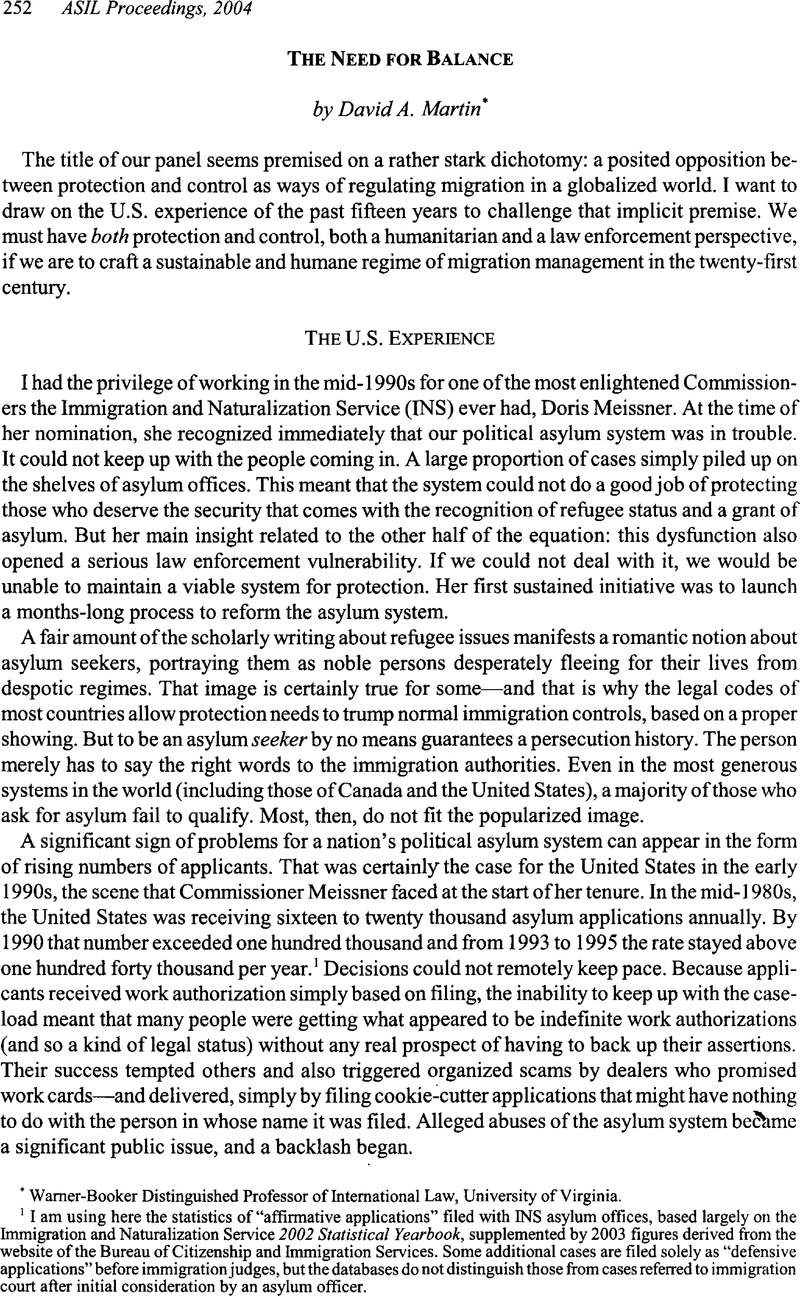No CrossRef data available.
Published online by Cambridge University Press: 28 February 2017

1 I am using here the statistics of “affirmative applications” filed with INS asylum offices, based largely on the Immigration and Naturalization Service 2002 Statistical Yearbook, supplemented by 2003 figures derived from the website of the Bureau of Citizenship and Immigration Services. Some additional cases are filed solely as “defensive applications” before immigration judges, but the databases do not distinguish those from cases referred to immigration court after initial consideration by an asylum officer.
2 See Martin, David A., Making Asylum Policy: The 1994 Reforms, 70 Wash. L. Rev. 725 (1995)Google Scholar.
3 See Philip G. Schrag, A Well-Founded Fear: The Congressional Battle to Save Political Asylum in America (2000).
4 Matter of D-J-, 23 I & N Dec. 572 (AG 2003). See also Jeanty v. Bulger, 204 F.Supp.2d 1366 (S.D.Fla. 2002), aff’d sub nom. Moise v. Bulger, 321 F.3d 1336 (11th Cir. 2003).
5 Immigration and Nationality Act §235(b)(l)(A)(iii), 8 U.S.C. § 1225(b)(l)(A)(iii).
6 67 Fed.Reg. 68924-26 (2002).
7 Martin, David A., Two Cheers for Expedited Removal, 40 Va. J. Int’l L. 673 (2000)Google Scholar.
8 See Kerwin, Donald, Counterterrorism and Immigrant Rights Two Years Later, 80 Interpreter Releases 1401 (Oct. 13, 2003)Google Scholar.
9 Convention relating to the Status of Refugees, July 28, 1951, 189 UNTS 137 (1951), as incorporated by Protocol relating to the Status of Refugees, Jan. 31, 1967, 19 UST 6223, T.I.A.S. No. 6577, 606 UNTS 267.